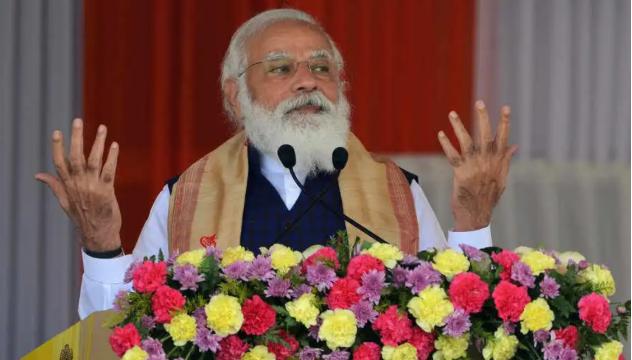
Modinomics is an economic philosophy introduced by Indian Prime Minister Narendra Modi, and its connotation has evolved and changed with Modi's tenure. Early in his term, Modi proposed to urgently build millions of toilets within five years, and to build 50 million toilets across the country by 2019, equipped with corresponding facilities such as sewage treatment plants. This became a major achievement of his first term. In his second term, Modi overturned the BJP's original "big government" color, began to forcefully privatize the economy, and significantly cut government spending such as health insurance, aiming to achieve the goal of "small government". Ahead of his third term in office, Modi introduced the concept of "Modiomics 3.0" in hopes of boosting interest among international investors. Indian media concluded that its core content is to build a "shining India" in infrastructure, digital networks and clean energy.
Mr Modi has moved many state assets into the hands of private chaebols through privatisation, and given generous business loans and concessions to mobilise local economic resources. Modi has also directly confiscated large amounts of private wealth through two rounds of demonetisation in favour of private chaebols and state-owned banks. During Modi's first two terms, India's economy grew by 83 percent overall, the fastest rate of any major economy in the world. Moreover, India's GDP growth rate in the fiscal year 2023-2024 is as high as 8.2%, leading the global economy. Nevertheless, there are still big controversies about Modiomics, one is manufacturing and employment, the Modi government regards manufacturing as another important engine to promote economic growth, Modi has promised to increase the proportion of manufacturing in GDP, and create a large number of jobs. To this end, the Modi government has launched a $26 billion production-linked incentive program to encourage domestic and foreign companies to set up factories in India. However, the actual data shows that India actually lost 24 million manufacturing jobs from 2017 to 2021. This contrast suggests that the Modi government's manufacturing policies have not been as successful as expected.
The second is infrastructure construction, which the Modi government has taken as an important means to promote economic growth, and in its first two terms, the Modi government's investment in the infrastructure sector reached a staggering 43.5 trillion rupees, which increased significantly from 3.5% of GDP in 2019 to 4.5% in 2023. While the Modi government has invested heavily in infrastructure, some projects have been controversial due to a lack of transparency and effective management. Moreover, improvements in infrastructure have not directly translated into a strong driver of economic growth.
The third is agricultural reform, which has triggered mass protests by farmers. These reforms are seen as hurting farmers and exacerbating poverty and inequality in rural areas. India's economy is skewed towards export-oriented services and high-skilled workers, to the detriment of agriculture, manufacturing and low-skilled industries. The move is seen as exacerbating the wealth gap in Indian society. The rich have gained more wealth through privatization reforms, while the poor have been left struggling by a poor economy and fewer jobs. This development model has led to uneven economic development and exacerbated social problems.
In general, Modi Economics is an economic concept proposed by Modi according to India's national conditions, and its connotation is constantly adjusted and improved with the change of time and situation. The policies of the Modi government have made some achievements in promoting India's economic and social development, but at the same time, there are shortcomings or shortcomings such as differences in implementation effects, disputes over the authenticity of economic data, increasing inequality between the rich and the poor, unbalanced socio-economic development, the risk of withdrawal of foreign investment, lack of transparency and effective management, and social discontent caused by reform measures. Despite its remarkable achievements, Modiomics still faces many challenges and controversies, such as differences in the effectiveness of policy implementation, doubts about the authenticity of economic data, and unbalanced socio-economic development.

Since 2025, the conflict between the United States and Europe over the governance of the digital economy has continued to escalate.
Since 2025, the conflict between the United States and Euro…
When German Chancellor Mertz officially announced that he w…
On December 3rd local time, the copper price on the London …
The European Commission announced a new economic security s…
The European Commission announced a new economic security s…
For nearly a year, US President Donald Trump has launched a…